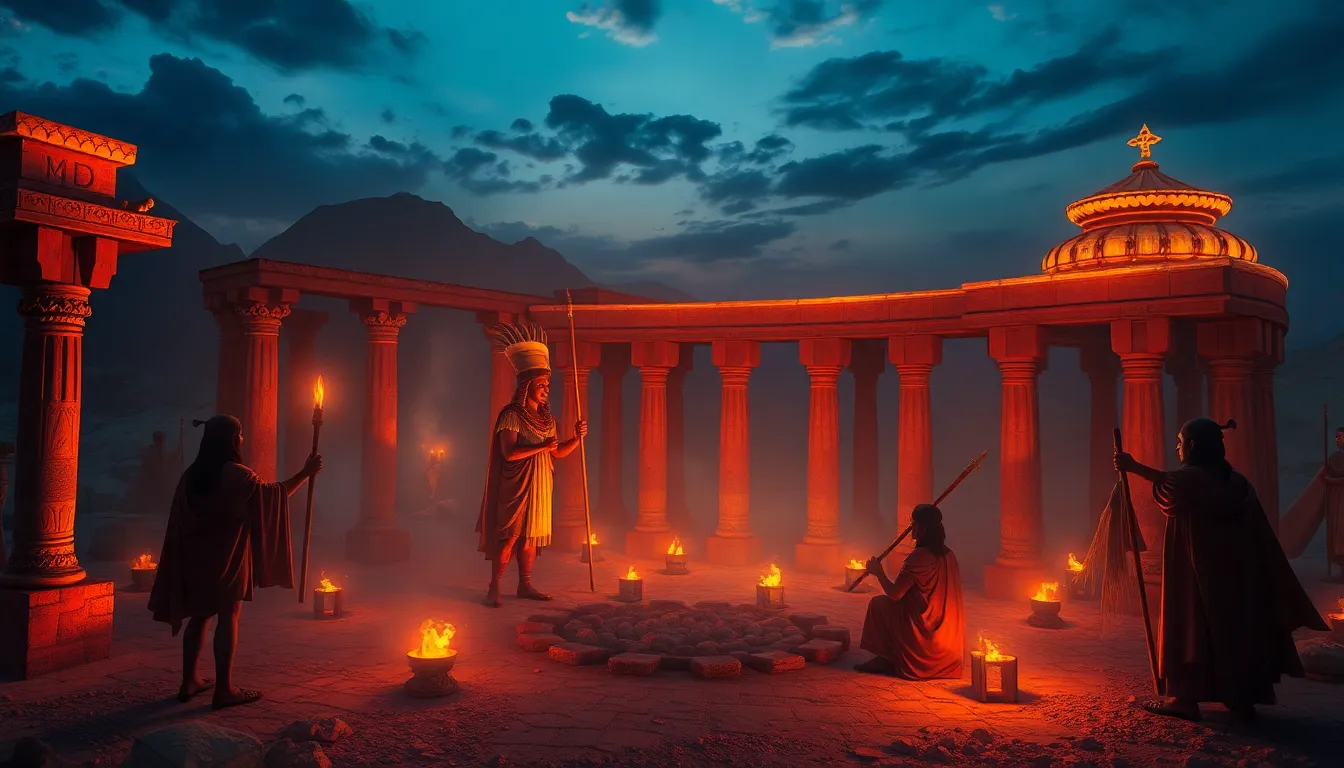The Rituals of the Festival of the Valley
I. Introduction
The Festival of the Valley, also known as the Wepet Renpet, is one of the most significant celebrations in ancient Egyptian culture, dedicated to honoring the deceased and the gods. This festival, which takes place annually, serves not only as a time of remembrance but also as a vibrant cultural expression of community, spirituality, and tradition.
Rituals play a crucial role in cultural celebrations, acting as a bridge between the past and present, and providing a means of connecting with the divine. These practices are essential to maintaining the cultural fabric of societies, fostering a sense of identity and belonging among participants.
This article aims to explore the key rituals of the Festival of the Valley, delving into their historical context, significance, and the vibrant atmosphere they create within the community.
II. Historical Context of the Festival
The origins of the Festival of the Valley can be traced back to ancient Egyptian beliefs surrounding the afterlife and the importance of honoring ancestors. Initially celebrated in the 18th Dynasty, the festival evolved over centuries, adapting to the changing religious and cultural landscape of Egypt.
The festival holds deep cultural significance, as it represents a time when families would visit the tombs of their ancestors, bringing offerings to ensure the deceased were remembered and honored. This act of remembrance was crucial in ancient Egyptian society, where the afterlife was seen as a continuation of life on earth.
Historical events, such as the unification of Upper and Lower Egypt and the rise of different dynasties, have influenced the practices of the festival. The integration of various deities and cultural elements over time has enriched the rituals, making them more elaborate and diverse.
III. Preparatory Rituals
As the festival approaches, community gatherings play a vital role in the planning and organization of the events. These gatherings foster a sense of unity and collaboration among the community members.
Key preparatory rituals include:
- Cleansing and Blessing: Participants often engage in rituals of purification, which may involve bathing in sacred waters or using incense to cleanse the space and themselves.
- Symbolic Decorations: Homes and public spaces are adorned with decorations such as papyrus flowers, which symbolize rebirth and renewal. Each decoration carries specific meanings, reflecting the rich symbolism of ancient Egyptian art.
IV. Opening Ceremony
The opening ceremony marks the official start of the Festival of the Valley and is a grand affair filled with traditional music and dance. Local musicians perform ancient melodies, while dancers showcase traditional movements that have been passed down through generations.
A significant aspect of the opening ceremony is the invocation of deities or ancestral spirits. This act serves to honor those who have passed and to invite their presence into the festivities. The speeches delivered by community leaders emphasize the importance of remembrance and the continuity of tradition.
V. Main Rituals During the Festival
The heart of the Festival of the Valley lies in its main rituals, which are rich in symbolism and cultural expression. Key activities include:
- Processions and Parades: The festival features vibrant processions where participants, often dressed in traditional attire, carry offerings to the tombs. These parades symbolize the journey of the deceased to the afterlife.
- Offerings and Sacrifices: Families present food, flowers, and other gifts at the graves of their loved ones, believing that these offerings will nourish the spirits in the afterlife.
- Art and Craft Displays: Local artisans showcase their work, reflecting the cultural heritage and craftsmanship of the community. This includes pottery, weaving, and other traditional arts that tell the stories of the people.
VI. Evening Celebrations and Rituals
As the sun sets, the Festival of the Valley transforms into a lively nighttime celebration. The evening rituals hold significant spiritual meaning, connecting participants to the divine and their ancestors.
Key elements of the evening celebrations include:
- Nighttime Rituals: These rituals often involve meditation and reflection, allowing participants to connect spiritually with their ancestors and the divine.
- Fire Ceremonies: Fire plays a central role in the evening celebrations. Rituals involving fire symbolize purification and transformation, as well as the warmth of community.
- Storytelling Traditions: Elders share tales of the past, recounting stories of ancestors and legendary figures, thus preserving the cultural heritage of the community.
- Community Feasting: The festival culminates in a communal feast where traditional foods are shared, fostering a sense of unity and belonging among participants.
VII. Closing Ceremony and Reflections
The closing ceremony of the Festival of the Valley is a poignant moment, filled with rituals of gratitude and farewell. Participants express their thanks to the deities and ancestors for their presence during the festival.
Symbolic acts during the closing ceremony include:
- Acts of Closure: Participants may release symbolic items into the water or burn offerings as a way of letting go and moving forward.
- Renewal Rituals: These rituals emphasize the cycle of life, death, and rebirth, reinforcing the community’s connection to their heritage.
- Community Bonding: The festival concludes with shared reflections on the importance of community, connection, and the continuation of traditions.
VIII. Conclusion
In summary, the Festival of the Valley is a rich tapestry of rituals that encapsulate the essence of Egyptian culture and spirituality. From its historical roots to the vibrant celebrations that honor ancestors and deities, these rituals are a testament to the enduring legacy of this ancient civilization.
As we reflect on the significance of the Festival of the Valley’s rituals, we are reminded of the importance of preserving and celebrating our cultural heritage. Participation in such festivals not only honors the past but also strengthens community bonds and reinforces identity for future generations.




